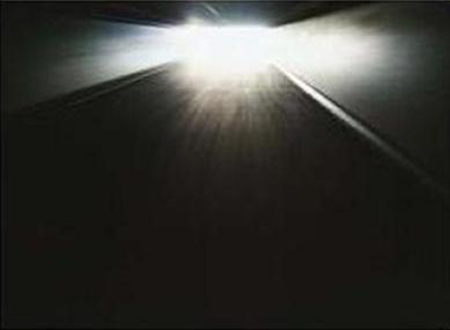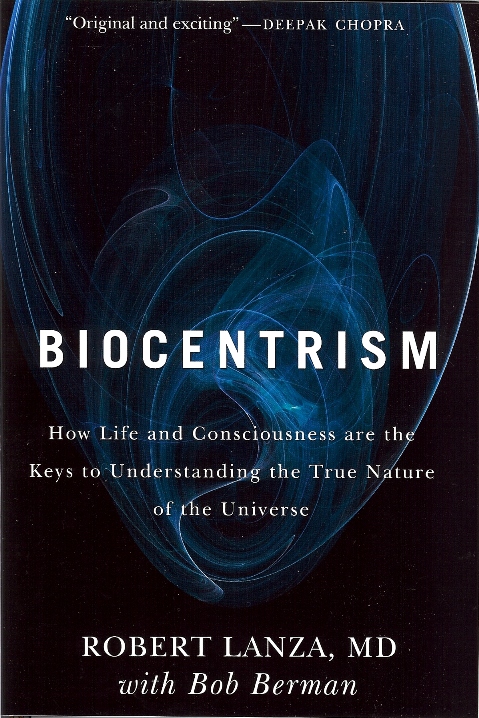The mind is paramount and limitless. It doesn’t die with the body.

“The human mind cannot be absolutely destroyed with the human body, but there is some part of it which remains eternal.” — Spinoza
Our conception of the world can profoundly change the way we live our lives. It can affect our emotions of love, fear, and grief — and above all — our ability to cope with our apparent mortality.
The attachment to life and consequent fear of death is a universal concern, and, in some, an obsession, as the replicants in Blade Runner made clear in their less-than-gentle way to all who would listen. Yet once we abandon the physical-centered cosmos and start to see things biocentrically, the verisimilitude of a finite life loosens its grip. Lucretius the Epicurean taught us 2000 years ago not to fear death. The contemplation of time and the discoveries of modern science lead to the same assertion-that the mind’s awareness is the ultimate reality, paramount and limitless. Does it die, then, with the body?
We think 80 is the last “now,” but who knows that time and space aren’t forms of intuition rather than immutable standalone entities—aren’t actually “always.” A cat, even when mortally ill, keeps those wide calm eyes focused on the ever-changing kaleidoscope of the here-and-now. There’s no thought of death, and hence no fear of it. What comes, comes. We believe in death because we’ve been told we’ll die. Also, of course, because most of us strictly associate ourselves with the body, and we know that bodies die, end of story.
Religions may go on and on about the afterlife, but how do we know it’s true? According to biocentrism, the timeless, spaceless cosmos of consciousness allows for no true death in any real sense. When a body dies, it does so not in the random billiard-ball matrix but in the all-is-still-inescapably-life matrix.
Scientists think that they can say where individuality begins and ends, and we generally reject the multiple universes of Stargate and Star Trek as fiction. But it turns out there is more than a morsel of scientific truth in this popular genre. This can only accelerate during the coming shift in worldview, from the belief that time and space are objects in the universe to one in which time and space belong only to the living.
Our current scientific worldview offers no escape for those scared to death of dying. But why are you here now, perched seemingly by chance on the cutting edge of all infinity? The answer is simple-the door is never closed! The mathematical possibility of your consciousness ending is zero.
Whether pencil or kitten, everything comes and goes. Logic is a fabric woven of such beginnings and endings. Conversely, those entities that are timeless by nature, such as love, beauty, and consciousness, have always dwelt outside the cold grasp of limitation. The Great Everything, which may be synonymous with consciousness, could hardly fit within the ephemeral category. Instinct joins with science to affirm that it is so, even if no argument, alas, can demonstrate it to everyone’s satisfaction. Our inability to remember infinite time is meaningless because memory is a limited and selective circuit within the neural network. Nor by definition can we recall a time of nothingness: no help there either.
Eternity doesn’t indicate a perpetual existence in time without end. Rather, it resides outside of time altogether. The Eastern religions have of course argued for millennia that birth and death are equally illusory. Because consciousness transcends the body, because internal and external are fundamentally distinctions of language and practicality alone, we’re left with Being or consciousness as the bedrock components of existence.
The concept of death has always meant one thing only: an end that has no reprieve or ambiguity. A fine wine glass can have a death when it falls and shatters into a dozen fragments; it’s gone for keeps. Individual bodies also have natal moments, their cells destined to self-destruct after about 90 population doublings. Stars die too, albeit after enjoying life spans usually numbered in the billions of years.
Now comes the biggie, the oldest question of all. Who am I? If I am only my body, then I must die. If I am my consciousness, the sense of experience and sensations, then I can’t die for the simple reason that consciousness may be expressed in manifold fashion sequentially, but it’s ultimately unconfined. Or if one prefers to pin things down, the “alive” feeling, the sensation of “me” is, so far as science can tell, a sprightly neuro-electrical fountain operating with about 20 watts of energy. But one of the surest axioms of science is that energy can never die, ever. Energy can neither be created nor destroyed. It merely changes form.
As discussed in a previous blog, the ‘many-worlds’ interpretation of quantum physics states that there are an infinite number of universes (the ‘multiverse’). Everything that can possibly happen occurs in some universe. Death doesn’t exist in any real sense in these scenarios since all of them exist simultaneously regardless of what happens in any of them. Think of the 20-watts of energy as simply holo-projecting either this or that result onto a screen. It will still be you — the same battery or agent — responsible for the projection.
The implications of this hit home a few years ago with the death of my sister Christine. After viewing her body at the hospital, I went out to speak with the family members. As I entered the room, Christine’s husband-Ed-started to sob uncontrollably.
For a few moments I felt like I was transcending the provincialism of time. I thought about how consciousness transcends space and time, and about the two-slit experiment where the particles go through both holes at the same time. I couldn’t doubt the implications of these experiments: Christine was both alive and dead, outside of time.
Christine had had a hard life. She had finally found a man who she loved very much. My younger sister couldn’t make it to her wedding because she had a card game that had been scheduled for several weeks. My mother also couldn’t make the wedding due to an important engagement she had at the Elks Club. The wedding was one of the most important days in Christine’s life. Because no one from our side of the family showed up except for me, Christine asked me to walk her down the aisle to give her away.
Soon after the wedding, Christine and Ed were driving to the dream house they had just bought when their car hit a patch of black ice. She was thrown from the car and landed in a bank of snow.
“Ed,” she had said, “I can’t feel my leg.”
She never knew that her liver had been ripped in half and blood was rushing into her peritoneum.
Soon after the death of his son, Emerson wrote, “Our life is not so much threatened as our perception. I grieve that grief can teach me nothing, nor carry me one step into real nature.” We need to learn to see through the veil of our ordinary perceptions.
Christine had recently lost over 100 pounds, and Ed had bought her a pair of diamond earrings as a surprise. It’s going to be hard to wait—I have to admit—but I know Christine is going to look fabulous in them the next time I see her.

